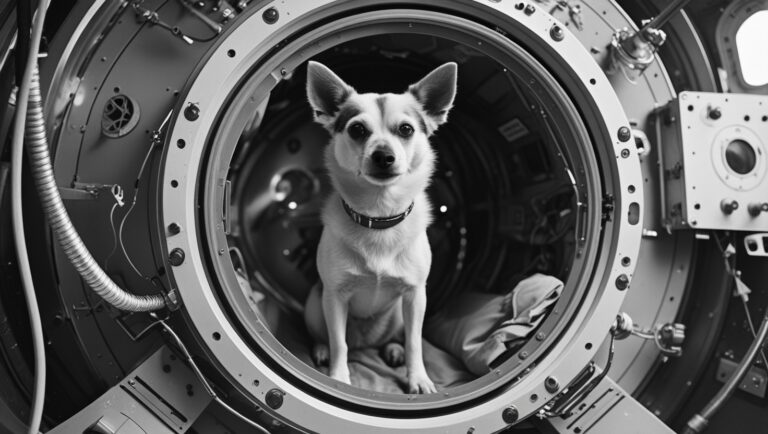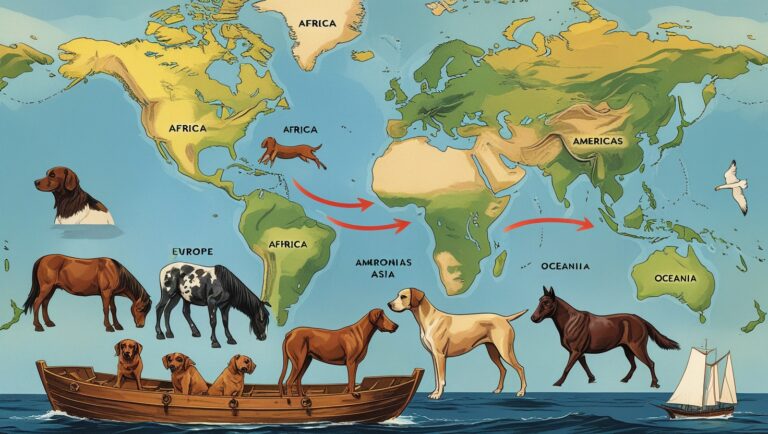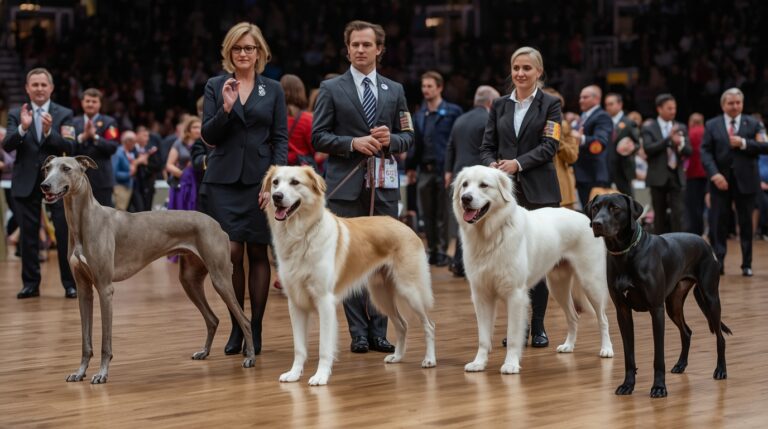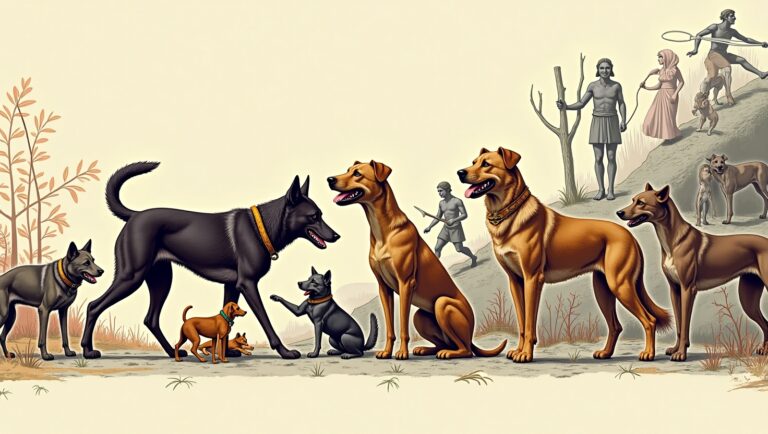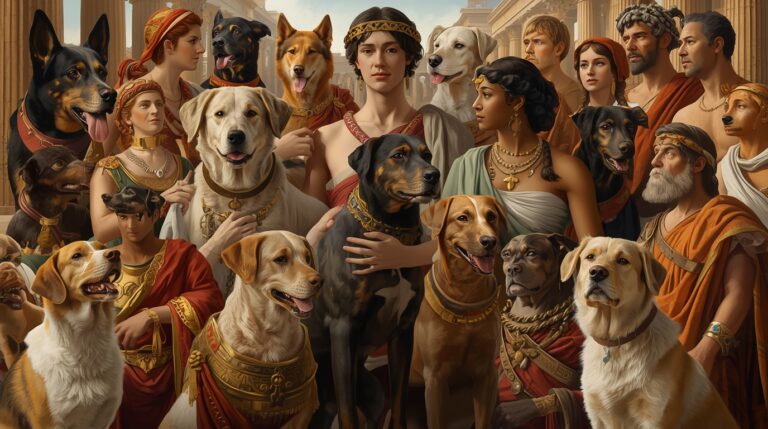The Impact of War on Breed Evolution
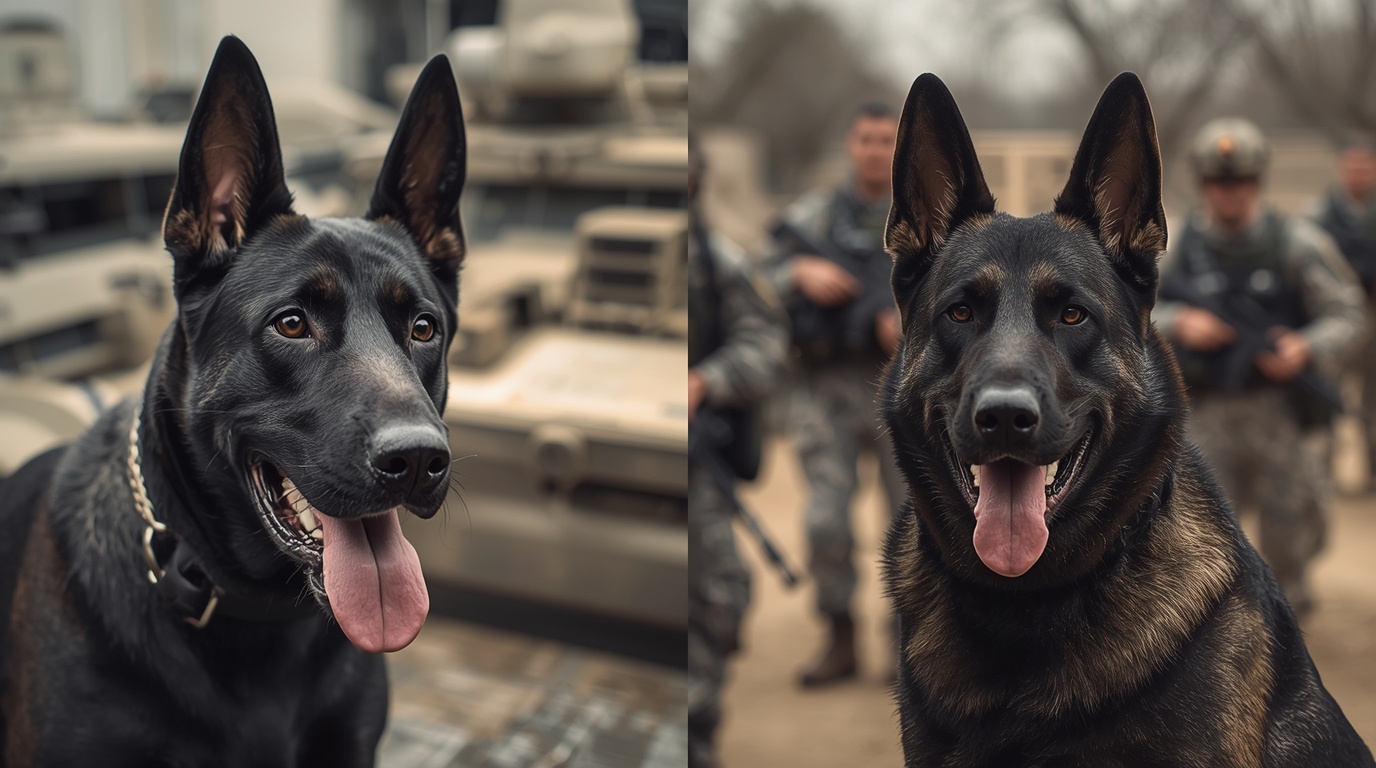
The Origins of War Dogs
Dogs have walked beside soldiers since ancient times, serving as guardians, attackers, and messengers.
- Assyrians used molosser-type mastiffs with armored vests
- Greeks and Romans deployed dogs in front-line attacks
- Dogs were seen as extensions of the warrior’s strength and spirit
Dogs in Medieval Battles
Large breeds such as the Mastiff were companions of knights and nobles. They protected castles, escorted prisoners, and hunted for survival.
Early Modern Conflict and Utility Dogs
By the 1700s and 1800s, dogs played informal but vital roles in guarding military encampments and serving as messenger runners across enemy lines.
- Napoleon reportedly used dogs to guard supplies
- Field dogs were valued for their loyalty under gunfire
World War I: The Dawn of Canine Tactics
The First World War changed everything. Trench warfare demanded intelligent, trainable dogs who could:
- Navigate between trenches with messages
- Detect gas leaks
- Provide emotional support to shell-shocked soldiers
The Rise of the Airedale and Doberman
- Airedales were used as messenger and ambulance dogs
- Dobermans, developed in Germany, served the German and later American Marines
WWI Breed Selection and Utility
Breeders emphasized:
- Obedience under fire
- High endurance
- Keen sense of smell
This began the shift toward formal war dog training programs.
also read this The History of Dog Breeds
World War II and Large-Scale Canine Deployment
Over 250,000 dogs were used across WWII by both Axis and Allied forces. They filled roles like:
- Sentry dogs
- Explosive detectors
- Guarding prisoners of war
- Messenger relay runners
The Role of the Red Cross Dogs
“Mercy dogs”, or Sanitätshunde, were trained to find and comfort wounded soldiers in no-man’s land.
- Used primarily by Germany, France, and Britain
- Selected for empathy, focus, and tracking skills
Post-War Popularity of Working Breeds
After WWII, dogs like the German Shepherd and Doberman Pinscher surged in popularity due to their wartime heroics and association with discipline and bravery.
Cold War and Military Dog Evolution
The Soviet Union launched the famous Laika into space in 1957. Meanwhile, U.S. military programs enhanced K9 training with scientific behavioral studies.
Vietnam War and Tactical Dog Use
- Over 4,000 dogs served in Vietnam, mainly as scouts, trackers, and patrol dogs
- The Labrador Retriever was used in jungle patrols due to its low profile and endurance
The Doberman Pinscher: Breed Shaped by War
- Developed by Karl Friedrich Dobermann in the 1890s
- Refined by WWII for strength, agility, and aggression control
- Became the official dog of the U.S. Marines
Genetic Impact of Wartime Breeding
War accelerated selective breeding by:
- Focusing on trainability, size, and strength
- Reducing overall genetic diversity
- Creating hyper-functional breeds
Post-War Decline and Breed Rebuilding
Some breeds like the Great Dane and Scottish Deerhound nearly vanished due to lack of food or overuse. Breed clubs worked hard post-war to reestablish healthy populations.
Companion Breeds and Urban Reconstruction
In post-war recovery periods:
- Toy breeds like Pugs, Chihuahuas, and Yorkies rose in popularity
- Smaller size suited urban life in bombed cities
- The demand for emotional comfort dogs increased
Military Dogs and Temperament Testing
The military developed standardized temperament tests, evaluating traits like:
- Gun shyness
- Handler responsiveness
- Fear aggression thresholds
These protocols evolved into civilian service dog standards.
The Use of Dogs in Propaganda and Morale
Dogs appeared in military posters, newsreels, and memorials, symbolizing:
- Loyalty
- Sacrifice
- Unbreakable bonds with humans
Dogs became heroes, with memorials erected in their honor (e.g., U.S. Marine War Dog Cemetery in Guam).
WWII Breeding Laws and Dog Control Acts
Nations implemented breeding laws:
- Germany restricted breeds based on eugenics theories
- UK’s wartime pet cull and rationing drastically reduced breed numbers
War-Induced Breed Migration
Military operations brought dogs across borders, leading to:
- Crossbreeding with local types
- Hybridization (e.g., GSD mixes in Eastern Europe)
Dogs in Resistance Movements and Espionage
- Paratrooper dogs trained to jump with troops
- Dogs carried microfilm, radio wires, or explosives
The Ethical Cost of War Breeding
Wartime conditions led to:
- Overbreeding for aggression
- Long-term health issues
- Emotional trauma for returning war dogs, many of whom were left behind
Modern Military Canine Units
Today’s K9 units use Belgian Malinois, Dutch Shepherds, and Labrador Retrievers for:
- Explosive detection
- Search and rescue
- Urban combat support
These dogs descend from war-bred bloodlines.
Legacy of War Dogs in Today’s Breeds
Traits that persist:
- Alertness in Dobermans
- Obedience in German Shepherds
- Stamina in Labradors and Malinois
Modern roles include police work, service dogs, and therapeutic roles for veterans.
Genetic Resilience vs. Genetic Loss
Thriving breeds:
- German Shepherd
- Malinois
- Labrador
Suffering breeds:
- Borzoi (used in Russia, declined after revolutions)
- Scottish Deerhound (breeding collapse during WWI)
Conclusion: The Battlefield’s Silent Evolutionary Force
War shaped the dog breeds we live with today. Whether it refined intelligence, built endurance, or defined ideal temperament, war’s hand in canine evolution is undeniable. Behind every modern working dog is a history of conflict, courage, and cooperation — a silent echo of the battlefield.
